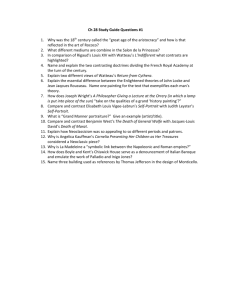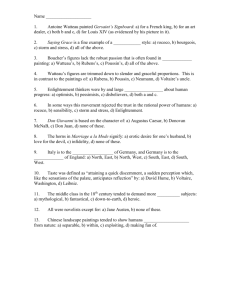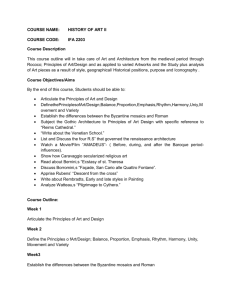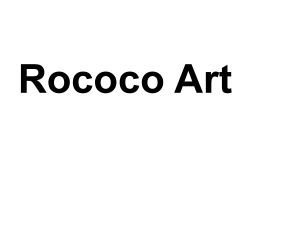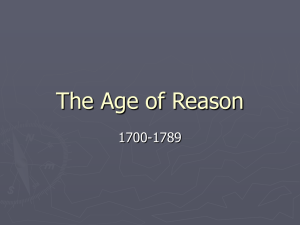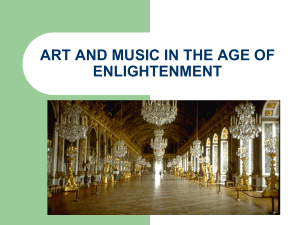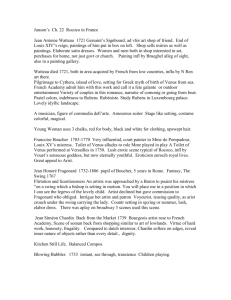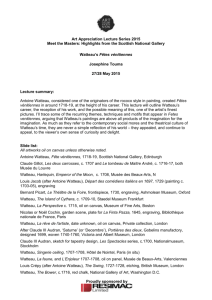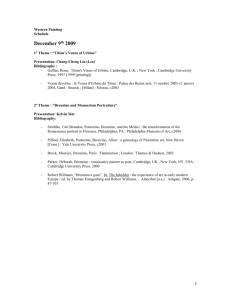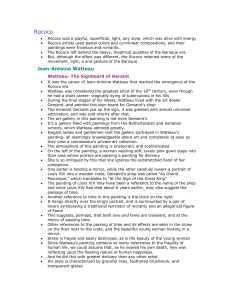скачати
advertisement
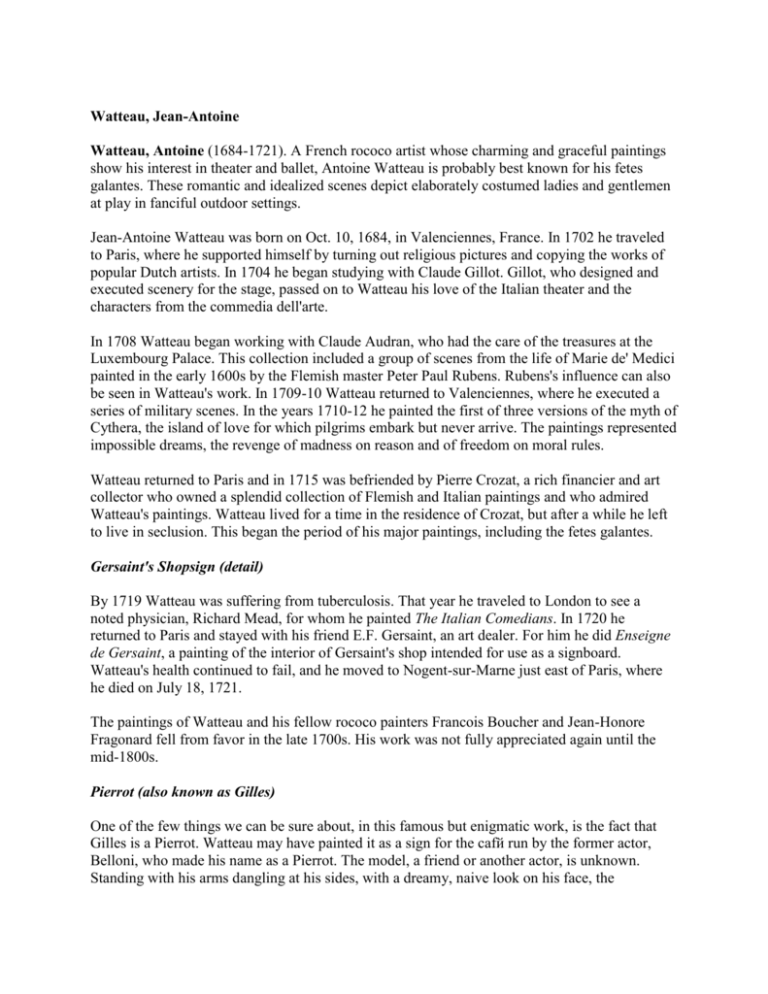
Watteau, Jean-Antoine Watteau, Antoine (1684-1721). A French rococo artist whose charming and graceful paintings show his interest in theater and ballet, Antoine Watteau is probably best known for his fetes galantes. These romantic and idealized scenes depict elaborately costumed ladies and gentlemen at play in fanciful outdoor settings. Jean-Antoine Watteau was born on Oct. 10, 1684, in Valenciennes, France. In 1702 he traveled to Paris, where he supported himself by turning out religious pictures and copying the works of popular Dutch artists. In 1704 he began studying with Claude Gillot. Gillot, who designed and executed scenery for the stage, passed on to Watteau his love of the Italian theater and the characters from the commedia dell'arte. In 1708 Watteau began working with Claude Audran, who had the care of the treasures at the Luxembourg Palace. This collection included a group of scenes from the life of Marie de' Medici painted in the early 1600s by the Flemish master Peter Paul Rubens. Rubens's influence can also be seen in Watteau's work. In 1709-10 Watteau returned to Valenciennes, where he executed a series of military scenes. In the years 1710-12 he painted the first of three versions of the myth of Cythera, the island of love for which pilgrims embark but never arrive. The paintings represented impossible dreams, the revenge of madness on reason and of freedom on moral rules. Watteau returned to Paris and in 1715 was befriended by Pierre Crozat, a rich financier and art collector who owned a splendid collection of Flemish and Italian paintings and who admired Watteau's paintings. Watteau lived for a time in the residence of Crozat, but after a while he left to live in seclusion. This began the period of his major paintings, including the fetes galantes. Gersaint's Shopsign (detail) By 1719 Watteau was suffering from tuberculosis. That year he traveled to London to see a noted physician, Richard Mead, for whom he painted The Italian Comedians. In 1720 he returned to Paris and stayed with his friend E.F. Gersaint, an art dealer. For him he did Enseigne de Gersaint, a painting of the interior of Gersaint's shop intended for use as a signboard. Watteau's health continued to fail, and he moved to Nogent-sur-Marne just east of Paris, where he died on July 18, 1721. The paintings of Watteau and his fellow rococo painters Francois Boucher and Jean-Honore Fragonard fell from favor in the late 1700s. His work was not fully appreciated again until the mid-1800s. Pierrot (also known as Gilles) One of the few things we can be sure about, in this famous but enigmatic work, is the fact that Gilles is a Pierrot. Watteau may have painted it as a sign for the cafй run by the former actor, Belloni, who made his name as a Pierrot. The model, a friend or another actor, is unknown. Standing with his arms dangling at his sides, with a dreamy, naive look on his face, the moonstruck Pierrot stands out monumentally and idiosyncratically against a leafy Italianate background. At the foot of the mound, reminiscent of a fairground stage, four half-hidden figures--the Doctor on his donkey, Lйandre, Isabelle and the Capitaine--contribute to the singularity of the composition and the poetic drama. The Embarkation for Cythera Genre painting came back into favour when the Academy admitted Watteau to its ranks in 1717 on the presentation of this work, the subject of which was so novel that the term "fкte galante" was coined to describe it. Drawing its inspiration from the theatre, the picture shows lovers in party dress--some wearing the pilgrim's hooded cape--coming to seek love on the island of Cythera, under the statue of its goddess, Venus. In an iridescent landscape which owes much to Venetian painting, allegory is caught up in the swirl of couples in a reverie; a new and less didactic interpretation of Titian's elegiac mode. Список литературы Для подготовки данной работы были использованы материалы с сайта http://www.ibiblio.org/louvre/paint/ http://ua-referat.com
